Serenity, now: Where to find a quiet spot amid the bustle of L.A.
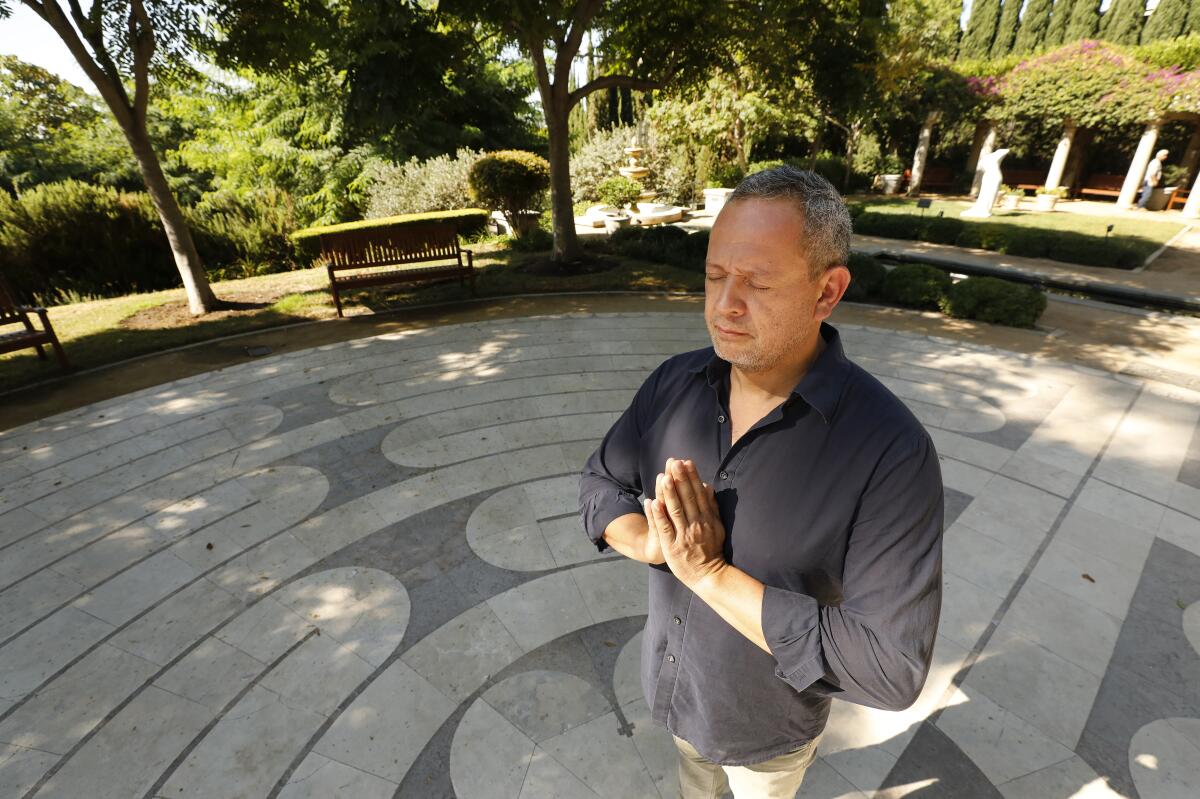
- Share via
A couple of times a week, I find myself in the early morning hours alone on a quiet bluff over the Pacific Ocean at the Korean Friendship Bell not far from my home in San Pedro. I love these stolen moments of quiet, but it never occurred to me that my brain did too.
“The human brain needs to rest; it needs to not have constant stimulus,” says Diana Winston, director of mindfulness education at UCLA Semel Institute’s Mindful Awareness Research Center.
Indeed, silence may do more for the brain than most people realize. Medical studies show that it can recharge our mental batteries by relieving stress and reboot decision-making and cognitive skills. And quiet allows for some processing time too.
“When you are not distracted by noise or goal-orientated tasks, there appears to be a quiet time that allows your conscious work space to process things,” Rebecca Beris writes in a story for LifeHack. “During these periods of silence, your brain has the freedom it needs to discover its place in your internal and external world.”
Even as little as five minutes of quiet can be restorative, but where can you be alone amid the roughly 25 million people in Southern California?
Beaches and mountains are obvious choices, but both can be far to go (and a tough freeway drive) for just a quick break. These places closer to the city allow you to reflect, meditate or just be still. There’s no guarantee they’ll be noise-free or people-free, but plan an early morning or late afternoon visit and you may find just what you — and your brain — crave.

Peace Awareness Labyrinth & Gardens, West Adams
The meditation garden and stone-carved labyrinth — copied from one inside Chartres Cathedral in France — at the Movement of Spiritual Inner Awareness center in West Adams were created as a quiet place to connect with yourself. Why not give in?
Stairs to the garden descend to gently terraced paths lined with bamboo, lush ferns and low-lying shrubs. Water rushes from fountains at every turn; benches and chairs in discreet areas welcome you to sit and be still. A little seep of city noise can be heard, but the sound of falling water silences everything. The labyrinth too is a study in peace; no talking as slow and deliberate steps are taken on the path.
The gardens are behind an Italian Renaissance/Beaux Arts house built in the early 20th century by onetime wine magnate Secondo Guasti and which later became home to Hollywood film choreographer Busby Berkeley. It’s free to visit (donations accepted), but you must register in advance online.
Info: 3500 W. Adams Blvd., Los Angeles; peacelabyrinth.org
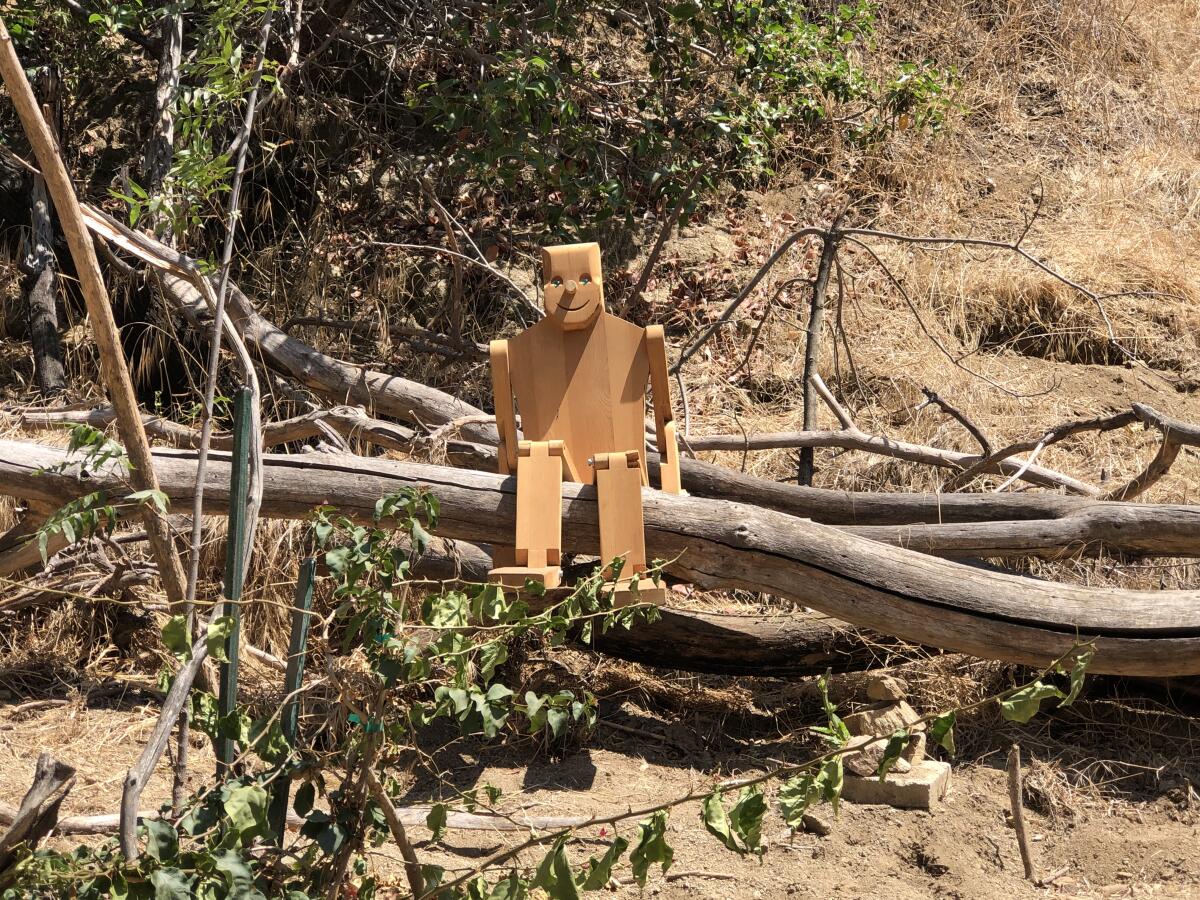
Wattles Mansion and Park, Hollywood
The long, sloping lawn in front of the two-story Mediterranean and Mission Revival home provides a hushed respite with views that look down on Hollywood and beyond. You can linger in the large arches on the porch of the estate, which is open only for private events. It was built in 1907 by Nebraska banker Gurdon Wattles as a winter home, a throwback to pre-film-era Hollywood, when you could live grandly with ease.
To enter the nearby Wattles Park, take a path uphill on the side of the house to built-in stone benches surrounded by shrubs, another place to sit and reflect. Continue up the stone stairs and you’ll find a dusty dirt trail where random objects — maybe folk art? — are strewn about: a wooden figure with marble eyes, a plaque with a smiling Buddha, a red Japanese torii gate. Funky, yes, but solitary too.
Info: 1824 N. Curson Ave., Los Angeles;laparks.org/park/wattles-gardens
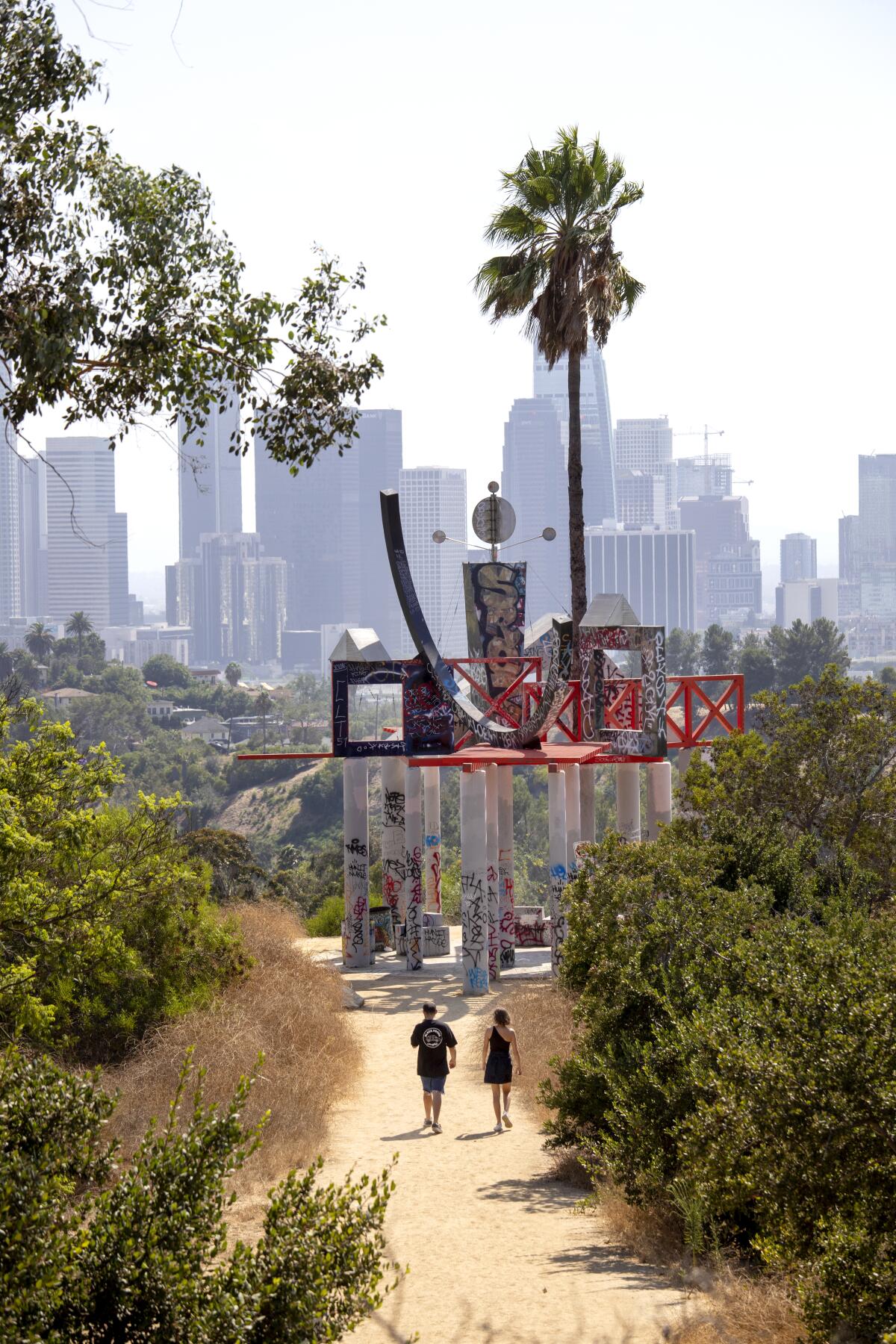
Angels Point, Elysian Park
In one of L.A.’s oldest parks, this spot has not exactly gone unnoticed, judging by the graffiti that covers much of artist Peter Shire’s large and whimsical art installation at the site. But the benches, also covered in paint, face one of the best views of downtown L.A.’s skyline, with Dodger Stadium off to the left and bits of wild Chavez Ravine in the foreground.
The artwork propped up by cement columns and a lone palm tree may be a deconstructed reflection of the downtown buildings in the distance. Too soon, you hear vehicles pulling over and car doors slamming. Consider yourself lucky to have found even five minutes of peace in the heart of the city.
Info: Starting at Stadium Way, take Angels Point Road and keep driving until you see the point’s sign. Park along the road and follow the short dirt path downhill.
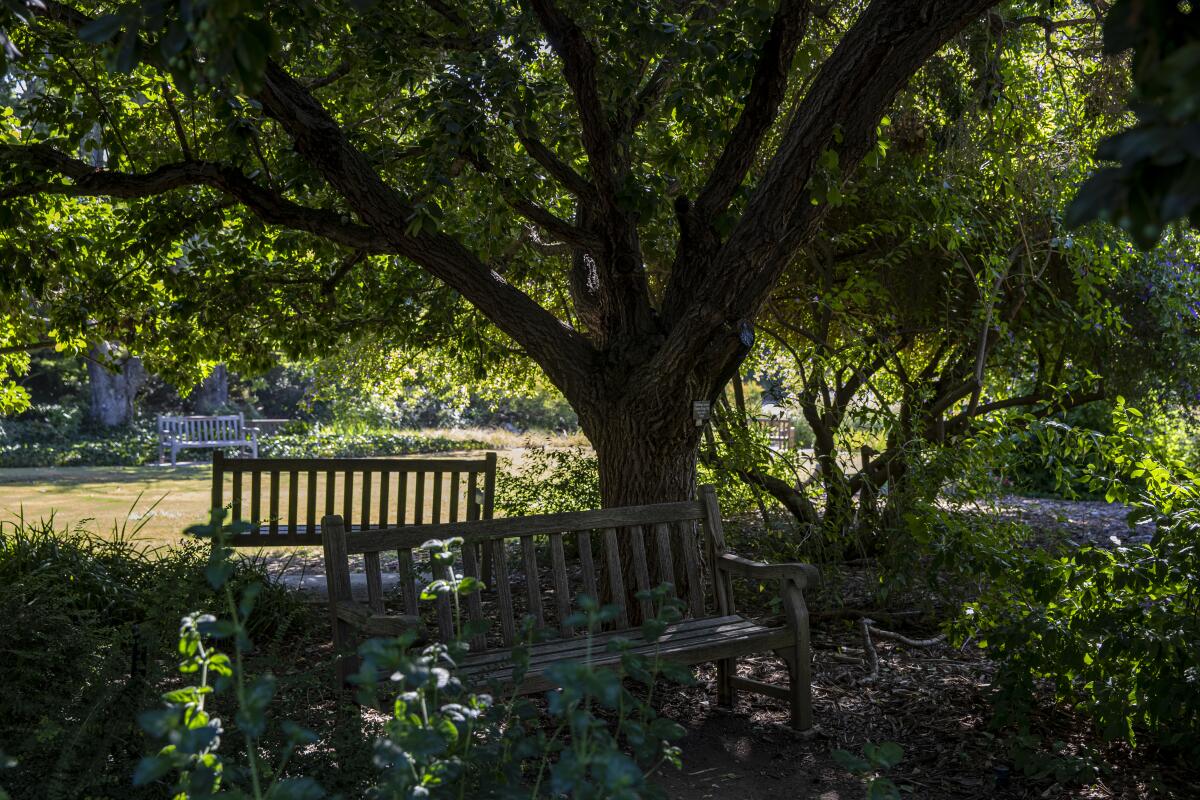
Los Angeles County Arboretum and Botanic Garden, Arcadia
For a bit of scenic serenity, dodge the roving peacocks near the entrance and head straight to the lily ponds, formally known as the Aquatic Gardens, on Tallac Knoll. It’s a high point in the 127-acre park at the top of steep stone steps along a cooling waterfall. Up here, you feel above it all. There are little ponds fringed with grasses, floating water lilies and benches beneath tree canopies that provide cool cover. Look north for a good view of the San Gabriel Mountains.
The arboretum once belonged to Elias Jackson “Lucky” Baldwin, one of Southern California’s wealthiest landowners in the late 19th century who called the former rancho home. The waterfall and lily ponds weren’t there then, but they recall the quiet beauty of the site’s early days. Admission is $9 for adults, $4 for children 5 to 12.
Info: 301 N. Baldwin Ave., Arcadia; arboretum.org
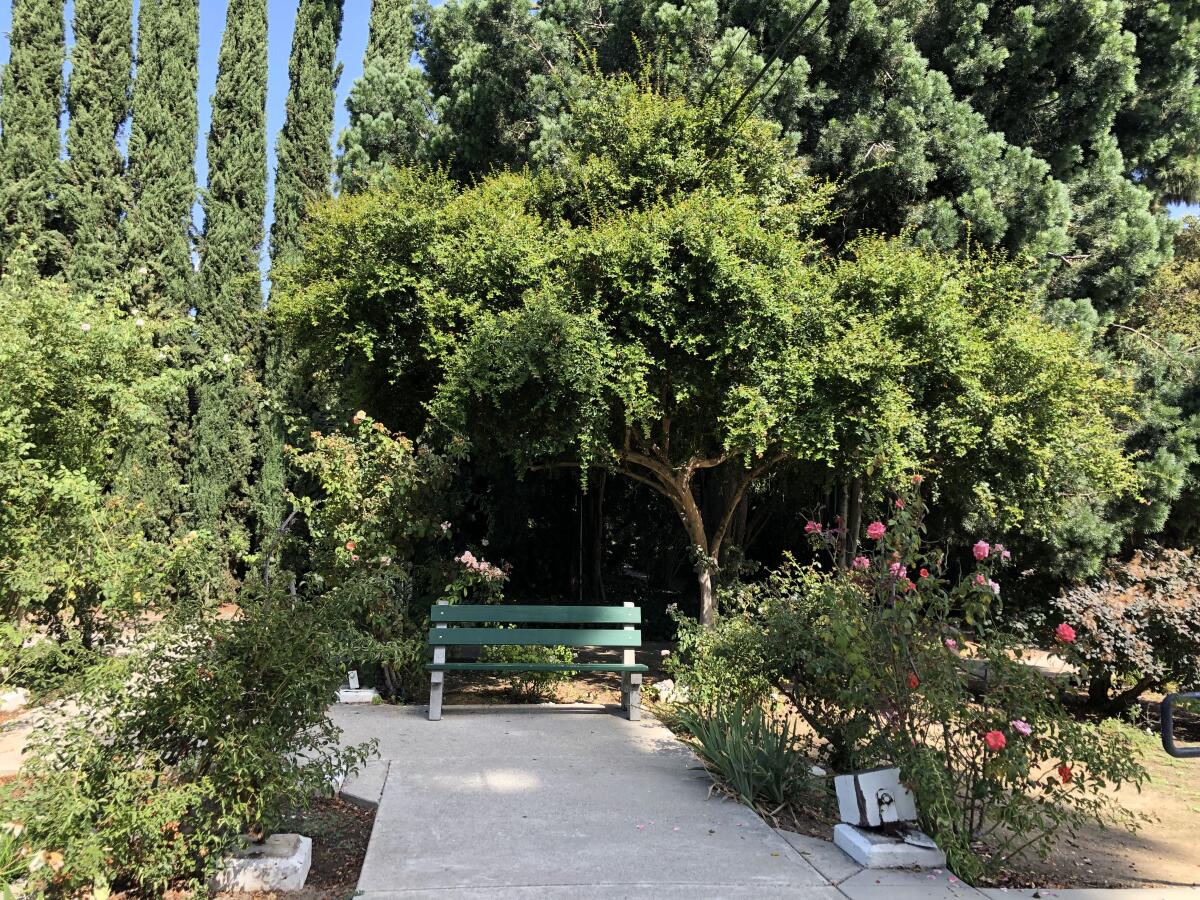
Lacy Park, San Marino
Searching for a secret garden? Lacy Park, set on 30 acres in a residential neighborhood, fits the bill. Silence-seekers should head for the rose garden on the park’s west side, near St. Albans Road. It’s narrow and long, with cypress trees lining one side and a rectangle of well-manicured grass surrounding the bushes.
Two benches at the entrance to the garden are partly shaded by trees, perfect spots to sit quietly and maybe even, yes, smell the roses (some were blooming when I visited on a scorching summer afternoon).
The wooden rose arbor that’s been a fixture for six decades was absent on a recent visit; it’s in the process of being replaced. But that doesn’t take away from the peaceful brilliance of this spot. Though the park is free to enter on weekdays, anyone who isn’t a resident of San Marino has to pay $5 on weekends (a fee L.A. Times columnist Steve Lopez took the city to task for more than a decade ago).
Info: 1485 Virginia Road, San Marino; bit.ly/lacypark

Cathedral of Our Lady of the Angels, Los Angeles
Churches are supposed to be quiet, but L.A.’s premier Catholic cathedral doubles as a tourist stop. At the right time — late afternoon on a midweek day — you can find fewer crowds and some soothing spots to escape the clatter of downtown.
Inside the cathedral’s courtyard, past a large fountain, is a small meditation garden with a little circular pool, a place to reflect and shut out the downtown din. At the far side of the courtyard, the glass wall decorated with etched angels floating above the freeway seems almost soundproof, reducing the traffic below to white noise. Architect José Rafael Moneo integrated the roadway into his design, considering “the Hollywood Freeway as Los Angeles’ river of transportation, the connection of people to each other,” according to the cathedral’s website.
Take time to go inside the impressive cathedral, built to hold 3,000 people. At those quiet times of the day, you may have it all to yourself. Admission is free; donations accepted.
Info: 555 W. Temple St., L.A.; olacathedral.org
The Huntington Library, Art Museum, and Botanical Gardens, San Marino
The century-old Huntington seems far from quiet: About 750,000 visitors come each year — and sometimes it feels like they’re all there on the same day. To escape the crowds, zip past the Chinese Garden’s sculpted stone bridges and climb to the hilltop ceremonial Japanese tea garden called Seifu-an, or “arbor of pure breeze.”
“Even if people are wandering through, there’s a spiritual peace and quiet,” spokeswoman Lisa Blackburn says. “It’s all about the slow, quiet and deliberate enjoyment of nature.”
The 9-by-9-foot building, originally built in Kyoto, Japan, and occasionally open for tea demonstrations, is the centerpiece of the classic garden fringed with Japanese maples, black pines, azaleas and a brook that runs down the hill. From here, you can look down on the more expansive Japanese Garden, where gingko trees flame with gold in late November. Admission costs $25 midweek, $29 on weekends; free the first Thursday of the month (provided you reserve in advance).
Info: 1151 Oxford Road, San Marino; huntington.org
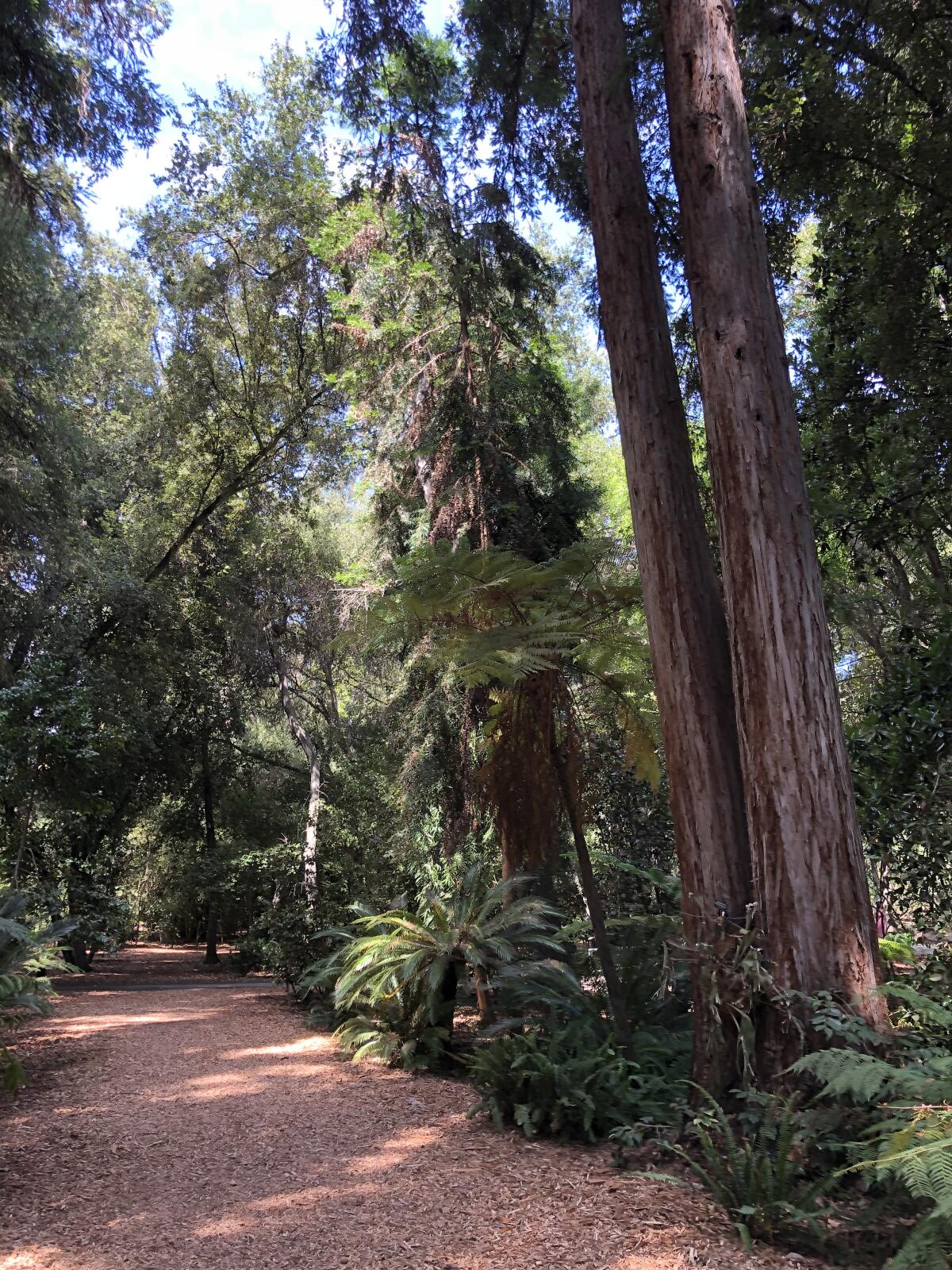
Descanso Gardens, La Cañada Flintridge
It’s not hard to find a hidden corner in the 150 acres known for glorious camellia bushes and native woodlands, as long as you steer clear of the popular (and noisier) mini-railroad.
Start in the ancient forest (which despite its name, debuted in 2015) where a carpet-quiet path winds past cycads, some of the oldest plants on the planet, and redwood trees. On a hill above, benches overlook a grove of native oak trees not far from the house of former owner and newspaper publisher E. Manchester Boddy. With the birdsong and filtered light, it’s a great spot to hit your personal reset button.
Admission is $9 for adults, $4 for children 5 to 12.
Info: 1418 Descanso Drive, La Cañada Flintridge; descansogardens.org

The Japanese Garden, Van Nuys
The Japanese Garden, a.k.a., Suiho-en, “garden of water and fragrance,” is an immaculate, low-profile six 6 acres of greenery that’s easy to explore on foot. On one side is a pond with lotus and water lilies; in the center, a floating bridge where double-crested cormorants and egrets gather as fat koi swim below. There’s even a “dry” (stone) Zen meditation garden in which to sit and ponder.
For the most part it’s quiet here, except for an occasional plane. Every once in a while, you get a whiff of the site’s true purpose: recycling millions of gallons of L.A.’s daily wastewater into usable water. The garden was created at the site of the Tillman Water Reclamation Plant (whose main building “Star Trek” fans may recognize as the t Starfleet Academy) to showcase the benefits of its waterworks. It costs $5 to enter.
Info: 6100 Woodley Ave., Van Nuys; thejapanesegarden.com
Mildred E. Mathias Botanical Garden at UCLA, Westwood
Should you ever need to jump off the 405 Freeway for a little quiet time, this garden is an easy exit away. It’s on a hillside behind the health sciences complex with gates open at posted hours. Inside, you’re mentally miles away from the hopping campus and Westwood.
There are a bunch of little gardens in this terraced hill with a stream: an ancient forest, desert plants, a stand of palms and showy plants native to Hawaii. It’s intended to be educational, of course, but it also seeks to create “a tranquil environment with the urban surroundings,” its mission statement says.
A good place to sit (when there aren’t groups around) is the Nest, a stone amphitheater underneath a gingko tree. From there, wander the little paths and enjoy the quiet. It’s free to enter.
Info: 707 Tiverton Drive, Los Angeles; botgard.ucla.edu
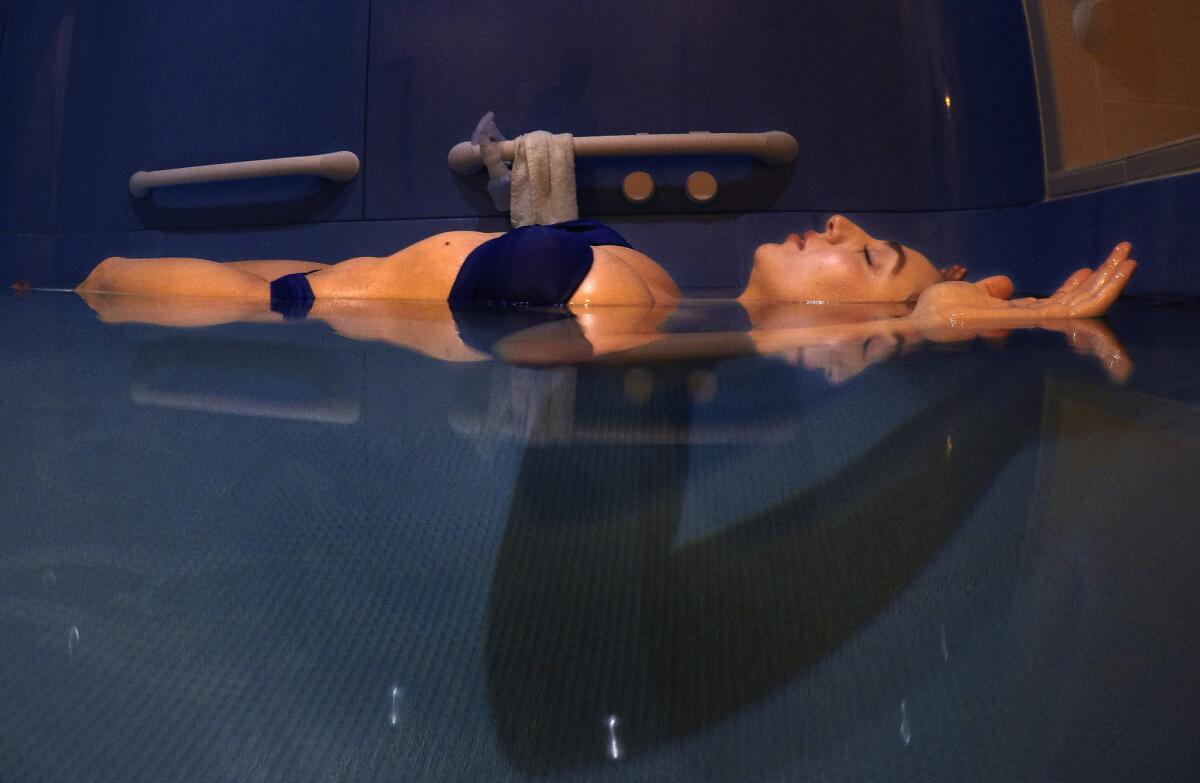
Just Float, Pasadena
When all else fails, go to a sure-fire silent spa. At Just Float, one of several “floating spas” in Southern California, you are led to your own personal float compartment, where a sign outside says “Quiet please, healing in process.”
For an hour, you are immersed in the super-salty water that keeps you buoyant in complete darkness (I asked for a few lights to stay on). Your mind empties as you swirl and listen to your heartbeat or your breathing. Only when my cellphone went off (I’d forgotten to silence it) did the world come rushing back. Otherwise, it was pure relaxation. Afterward, you can stay and sip herbal teas and keep the calm vibe going. $59 for a first visit.
Info: 76 N. Hudson Ave. Suite 120, Pasadena; justfloat.com
More to Read
Sign up for The Wild
We’ll help you find the best places to hike, bike and run, as well as the perfect silent spots for meditation and yoga.
You may occasionally receive promotional content from the Los Angeles Times.











